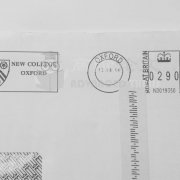代写:什么是内容分析方法
代写:什么是内容分析方法
这些漂白的区域还是只有女性覆盖的琐碎区域?这就是内容分析要回答的问题。内容分析的方法是为了了解新闻内容的形式,而新闻内容的形式确实是男性和女性所采用的。当媒体内容被量化时,孤立的案例有时会被低估(Kolmer, 2008)。这就是为什么我们所做的内容分析也被现有的研究以定性的方式批判性地分析(flying & Swift, 2013)。分析结果显示,这一说法使得女性更多地关注生活方式(不重要的领域),而男性更多地关注政治和体育。这两个研究问题的目的是了解新闻编辑室中性别的代表(男性和女性记者)是什么,以及男性和女性记者实际报道的领域是什么。对于第一个问题,因此确定新闻编辑室的性别代表是不平等的。在所有被纳入分析的404个故事(所有媒体)中,73%的故事由男性报道,27%由女性报道。
这是不平等的。至少,从收集到的数据样本来看,女性只报道了所有新闻的四分之一,无论是软媒体还是硬媒体。新闻不平等并不是什么新鲜事。事实上,人们普遍认为新闻报道中存在不平等(Alan, 1999)。因此,也可以接受的是,参与表征的人可能也反映了同样的不平等。Alan(1999)的工作主要是关于种族主义的,但由于种族主义涉及到不平等作为一个方面,可以做出类似的推论。女性运动的新闻机构或新闻领域存在偏见(Dickinson, 2010;Ryfe, 2009)。考虑一下North在“Blokey Newsrooms”(North, 2012)中呈现的内容。与同行不同的是,对女记者的研究往往仅限于对她们在新闻编辑室的工作进行快照,而较少涉及她们的经历。
代写:什么是内容分析方法
Now are those bleached out areas or trivial areas only covered by women? This is the answer that the content analysis set out to answer. The content analysis method was carried out in order to understand the form of journalism content that is indeed taken up by men and women. When media content is quantified, it so happens that at times the isolated cases might get underrated (Kolmer, 2008). This is the reason that the content analysis done is also critically analysed in a qualitative way with the existing research studies (Flew & Swift, 2013). The results of the analysis show that the claim made that women report more on lifestyle (unimportant areas) and that men report more on politics and sports. The two research questions aimed at understanding what the representation of gender in the newsroom (male v. female reporters) were and what were the areas men and women journalists were actually reporting in. For the first question, it was hence established that the representation of gender in newsroom was not equal. Of all 404 stories (across all mediums) that were considered for the analysis, around 73% were reported by males, whereas 27% were reported by females.
This is inequality. At least, from the data sample collected, it does appear that women are reporting only a quarter of all news, whether the soft media or the hard media. Now inequality in news is not exactly a new thing. In fact, it is an accepted notion that in news representations there will be inequality (Alan, 1999). Hence, it can also be accepted that the people involved in the representations might also reflect the same inequality. The work of Alan (1999) was mostly on racism, but since racism touches on inequality as one of the aspects, a similar inference can be made. The journalistic institutions or the journalistic sphere in which the women moves is biased (Dickinson, 2010; Ryfe, 2009). Consider what North presented in the “Blokey Newsrooms” (North, 2012). Research about women journalists unlike their counterparts was often restricted to only taking snapshots of their work in newsrooms and less about their experiences.








